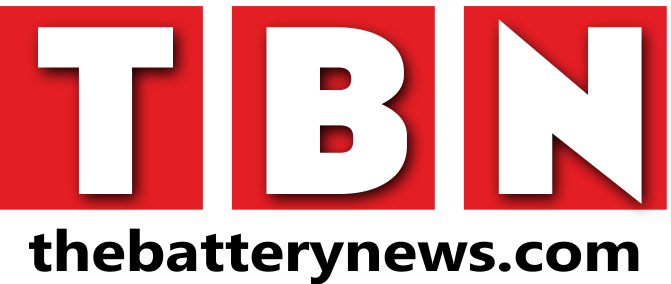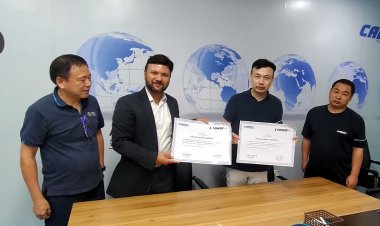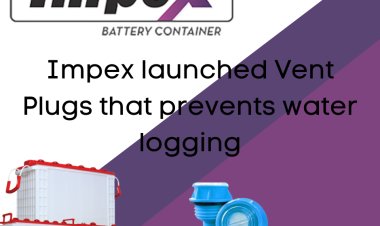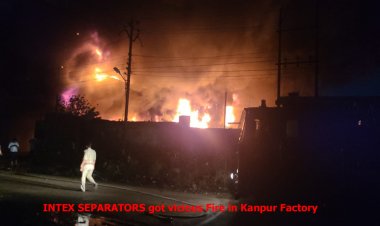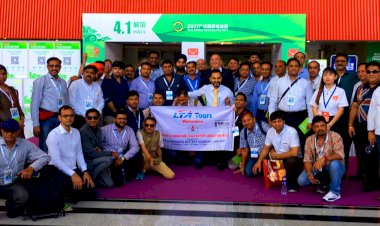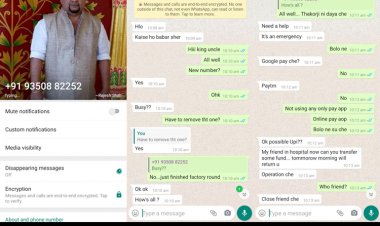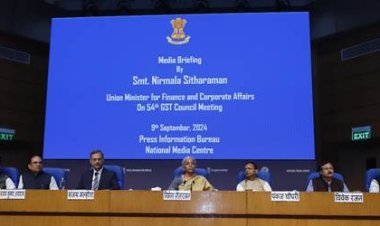Pollution Control for Lead Acid Battery Industry
Chief Minister of Kerala, Sh. Oman Chendi, honoured Sh. M.P. Babu, Chairman of Orion Battery, Calicut (Kerala) by an award.
M.P. Babu Chairman, Orion Battery, Calicut Controlling pollutants is a laborious task when dealing with chemicals.
Two factors are of utmost concern: Air and water.
Ventury Scrubber - Solution for Air Pollution
When dealing with air pollution we have to make sure that there should not be any dissemination of dust which may contain Lead particles and acidic fumes, whatever smaller quantities it might be. The only solution is to collect the air and filter it somewhere and allow the gases to flow out to a safer height.
We successfully tackled this problem by providing suction units in all our departments. All areas of production are equipped with air suction units and these are connected to the ventury scrubber.
The ventury scrubber is connected to outlet stack of 30 m height which is well above the prescribed pollution control norms. Dust and fumes are collected by the suctions units and solid particles are filtered in between. Gases emerge out through the stack of ventury scrubber, to a safer height of 30m. Adopting this method of control, we could successfully overcome the spread of fumes and gases to surroundings and that was important. We have periodic pollution checks carried out at stack openings and found pollutant gases are below detection limits.
Water Treatment
The story is different when we deal with water. As we all know about it, water is indispensible in the production of batteries and effluent water is contained with all regular pollutants, mainly acid, then Lead particles, of the battery environment. Separation of solid contents and neutralization are the two processes one can employ. Water, once neutralized, is safe to discharge. Here, we confronted a serious question: how do we replenish the quantities which we use every day? Scarcity of water is one of the real time concerns of us. Whether neutralized or not, discharge of water from a factory is one of the major sources of worries in the minds of people. Reuse of water was the only solution we had.
The first step in the regular method of water treatment is to collect the water at a tank called screen chamber. Solid contents deposited at the bottom and the overflow is collected in the main collection tank for further treatments. This is the accepted method of treatment directed by the authorities.
Here, we elaborate a bit more. We put three screen chambers instead of one. All water usage points like washing places, formation chamber are connected to the first screen chamber. Overflow from the first chamber is collected in the second and subsequently to the third. We could assure maximum deposit of solid contents by applying this method.
Overflow from the third screen chamber is collected at the main collection tank. From the main collection tank water is transferred to the flocculation tank for further treatment. PH level of water is checked at this point for record and it would be acidic, no doubt. Obviously, the next task is to bring the pH level to normal by adding Calcium/Sodium Hydroxide. Here too, we can deal with the solid contents once again. There still would be solids and raising the pH level to 10 helps the solid contents to sediment almost fully. This is ensured by adding lime in proportionate quantities and subjected to flocculation for a prescribed period of time, depending on the volume of water.
When the above process is over, reduce pH to neutral range by adding suitable chemicals of acidic nature. Adding polyelectrolyte solution helps the coagulation process faster and finally solid contents, as we call it, sledge, formed at the bottom of the treatment tank. As a regular practice, sledge is collected from the bottom of the tubular settler in the final stage, but, it would be better to remove it after flocculation process. We do the same.
Neutralized water is then channelized to a tubular settler in order to remove any leftover solids contents in the form of sledge. Sledge is again collected from the bottom of tubular settler and which would be very minimal in quantities once we do the above mentioned removal after flocculation.
Now, the water is free from solid contents and pH maintained normal. This overflow from tubular settler is ready for reuse. We again pass it though carbon and sand filters in order to ensure 100 % removal of any foreign matters. This is an ongoing process and we benefit both in terms of availability of water and its quality. We assure that there is zero discharge of water from our factory to surroundings.
The solid deposit, mainly in the form of dross, goes to recyclers.
To add, dealing with noise is equally important in the same way we deal with other pollutants. We could successfully control reverberation of sound by hollow brick work in the construction. This found very effective and we could maintain the noise level well within limits.
Much of my detailing is centered on water treatment rather than air or noise or any other form of pollutants. The reason is that, when it is coming out from a factory, even if is neutralized and free of pollutants, water is a source of concern to one’s eyes. It is the general perception that industries contribute much to pollution - it is true partly, partly because of the fact that one could not assess the magnitude of pollution caused by the attitude of people in everyday life. More than that, preservation of a prime natural resource is our commitment to the society, as we call it, the corporate social responsibility.
